Subscribe to our newsletter to find out about all the news and promotions, and automatically receive a welcome discount coupon in your email.
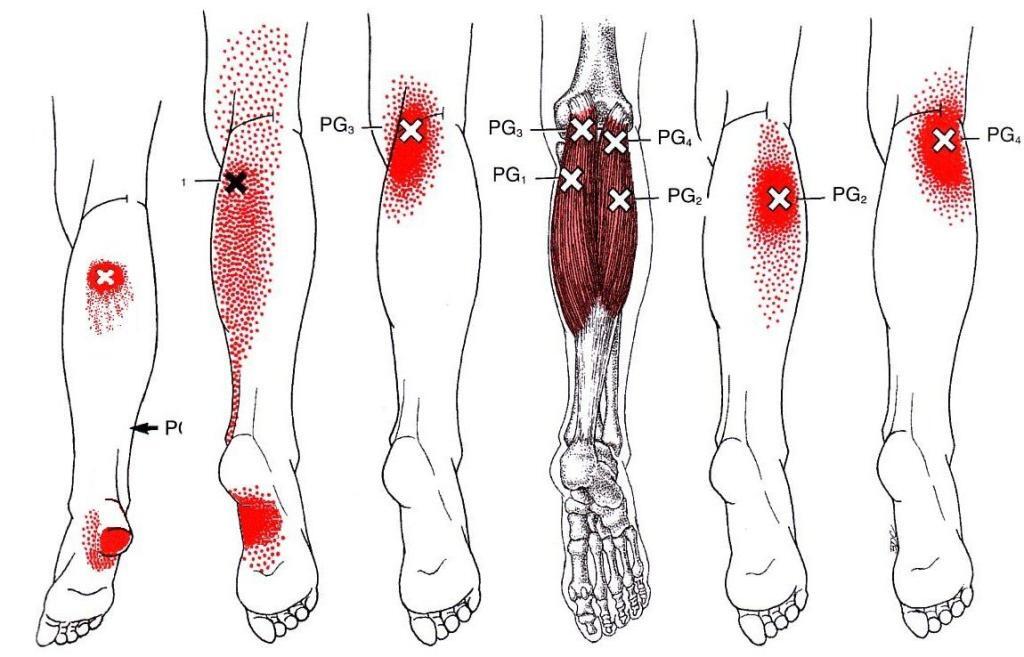
Plantar fasciitis: trigger points, symptoms and treatments
by Paco Amoros
La Plantar fasciitis is one of Most common injuries among popular runners and in some cases, if not given the proper treatment and on time, it can become a terrible nightmare of several months of aches, pains and inability to run.
Although the annoying plantar fasciitis affects 10% of the population, It is more common in profiles such as the popular runner, so we are going to see some tips for runners who want to recover from plantar fasciitis.
To answer the question of whether trigger points o "tigger points" can trigger the Plantar fasciitis, It is essential to define each of these concepts in such a way that the possible causal relationship between them can be understood.
The two sports specialties in which it occurs the most are long-distance runners and basketball players. However, it can occur in people who do not play sports regularly, although in these cases it usually appears after 45 years of age.
What is plantar fasciitis and trigger points?
In the anatomy of the foot, the "plantar fascia" or arcuate ligament It is a band of connective tissue that joins the heel with the toes, that is, a thick ligament that stretches when you take a step. Consequently, if a tear or a contraction is caused in the attached muscles, pain appears (plantar fasciitis).
Normally, it hurts in the heel as injuries occur more frequently in this area, but the pain can appear in the middle and anterior part of the sole of the foot. The causes of this injury are diverse, including excessive physical activity, retraction of the Achilles tendon, arthritis and diabetes, and even wearing defective footwear. But, then, what relationship does it have with trigger points?

Is named trigger point to a very specific area or a group of fibers that contracts within the muscle tissue, forming a type of nodule that causes pain when it is active. People who suffer from them often refer to them as "balls", "contractures" or "knots" because they can notice, when they put pressure on them, a kind of swelling.
A characteristic of these nodules is that can be highly irritable And be source of pain in the area where they are or radiate the pain to other areas of the body. They are produced by excessive muscle contraction, stress or inadequate calcium metabolism.
Well, by linking both concepts you can intuit what happens in this case. One or more trigger points located in the gastrocnemius muscles (external and internal) can project the pain towards the heel, as occurs on many occasions. Trigger points do not follow neurological or visceral patterns, which is why, on occasions, it is difficult to locate them and the amount of pain depends on the degree of irritability of the same.
Plantar fasciitis, a common injury in athletes
Plantar fasciitis occurs due to the tendon fascial tissue overload that holds the foot and that is located on the sole. Athletes who make a continuous effort and highly repetitive movements with their feet, such as athletes or soccer players or basketball players, are usually one of the most affected by this ailment.
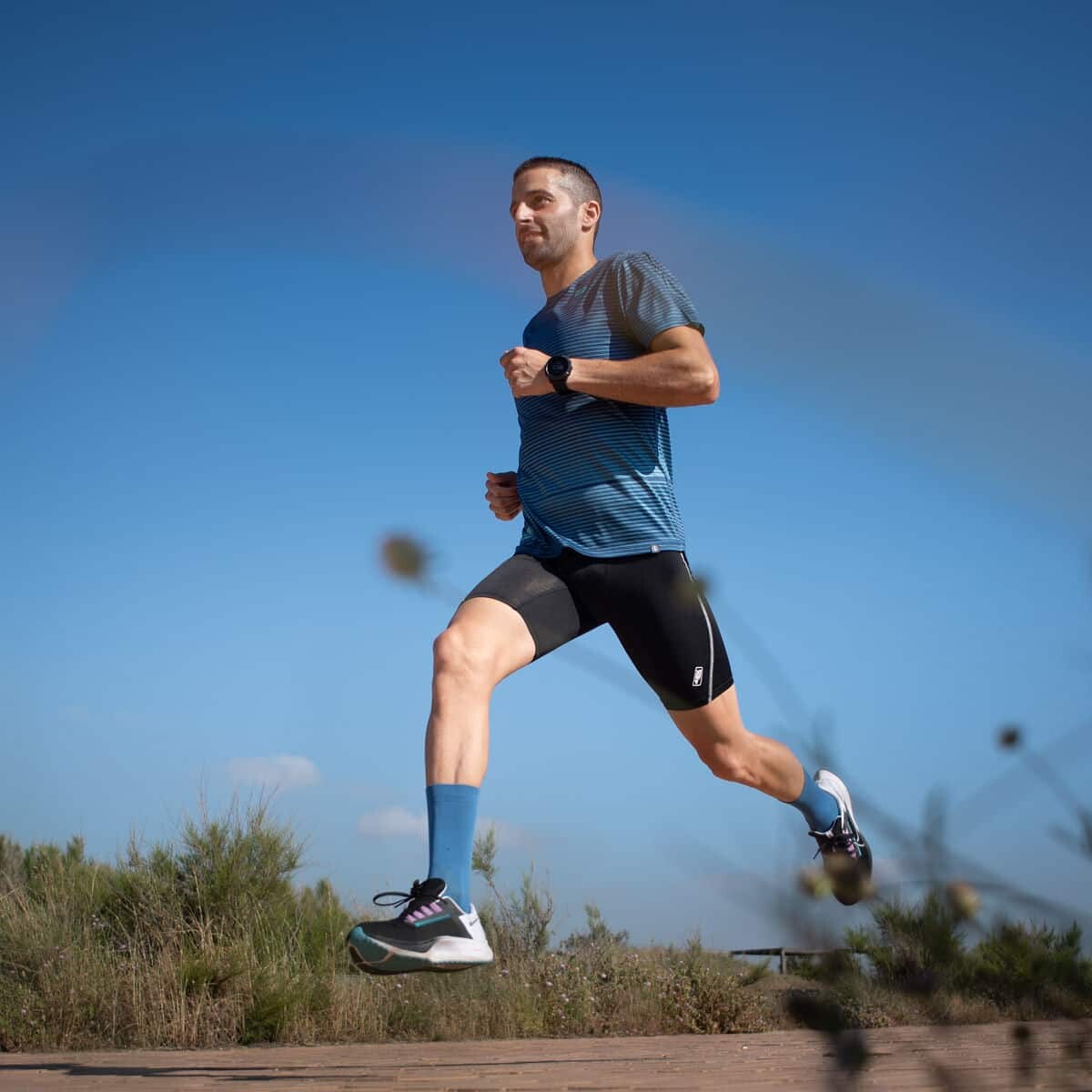
How does plantar fasciitis occur?
The function of the plantar fascia is to provide stability and shock absorption capacity to the longitudinal arch of the foot. The inflammation of the membrane or aponeurosis that covers the muscles of the sole of the foot and its insertional area in the heel, caused by the tractions in each impact and in the propulsion movements of the foot, is what is called in sports medicine, plantar fasciitis.
The high-performance activity to which professional athletes subject their heels, especially when running on hard ground or surfaces, cause continuous percussion on the soles of the feet, which produce micro-traumatisms, which in turn are responsible for a possible inflammation of the heel and its consequent generation of pain.
In some cases, chronic heel pain can also be caused by a so-called calcaneal spur (spike at the bottom of the heel seen on X-ray), which also causes inflammation around the fascial fibers, although it has no cause. why be the cause of plantar fasciitis. Between 15 and 25% of the population have a heel spur but do not experience pain and, in contrast, many runners with plantar fasciitis do not.
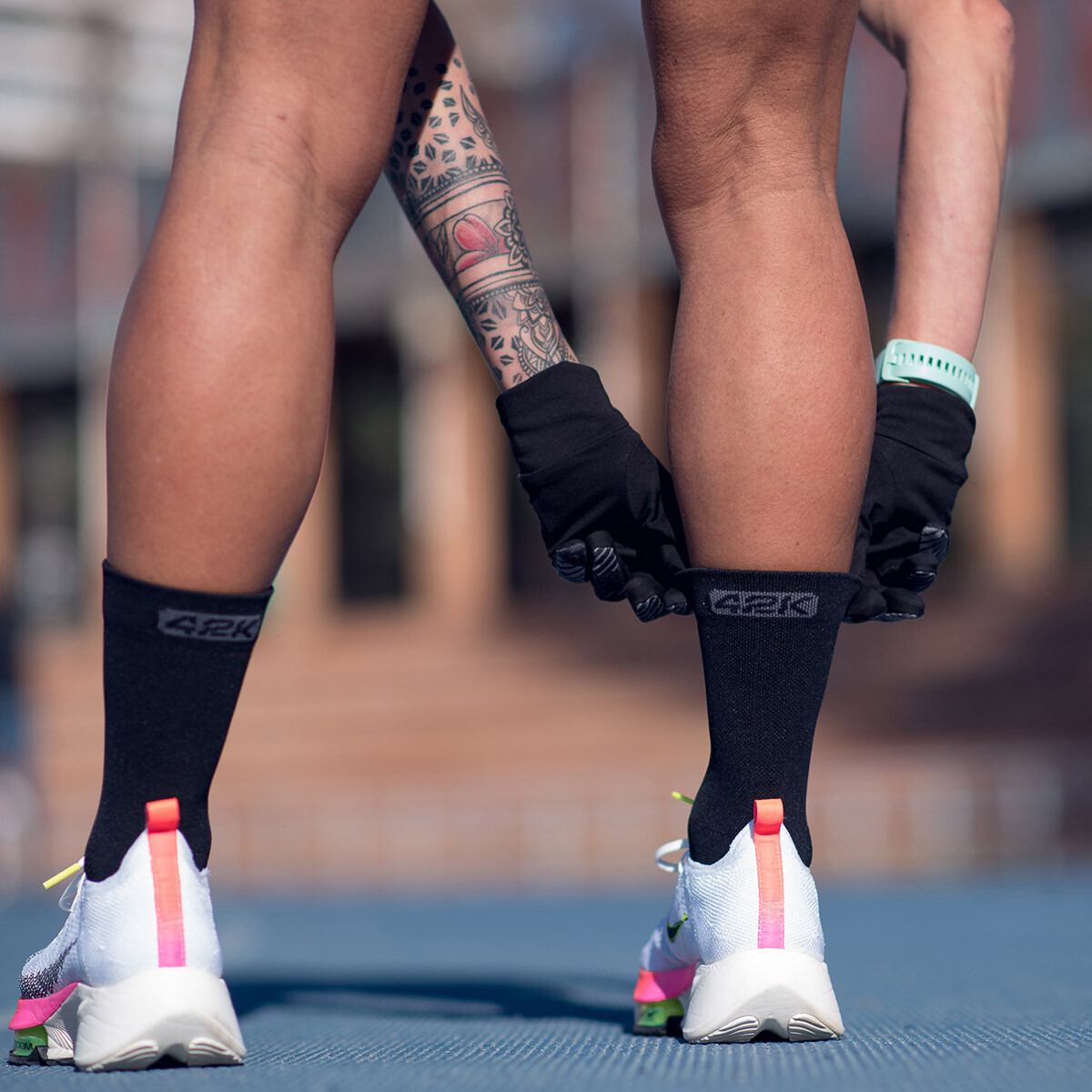
The main causes of this injury are:
- Overload: It is usually the most common and is caused by the excessive use of the joint or the repetition of a sports technique developed in an erroneous way.
- Change of footwear: It is very common for plantar fascia pain to appear when renewing sports shoes.
- Bone problem: Some bone-type malformation can generate plantar fasciitis.
Main symptoms of plantar fasciitis
When you suffer from plantar fasciitis the main symptoms are the following:
- Pain: It is what the patient suffers the most and the first thing he notices when doing any sporting activity.
- Tenderness and swelling
- Heat
- Redness
- Tension in the sole of the foot
Prevention
Prevention of plantar fasciitis is relatively simple: the warming up and el stretching prior to physical exercise is essential to avoid it. Before each training session, a light run of 5 or 10 minutes is recommended. Afterwards, it is necessary to carry out, in addition to the general stretching, some specific ones on the sole of the foot to reduce the probability of injuries to the fascia of the foot and the muscle-tendon structures.
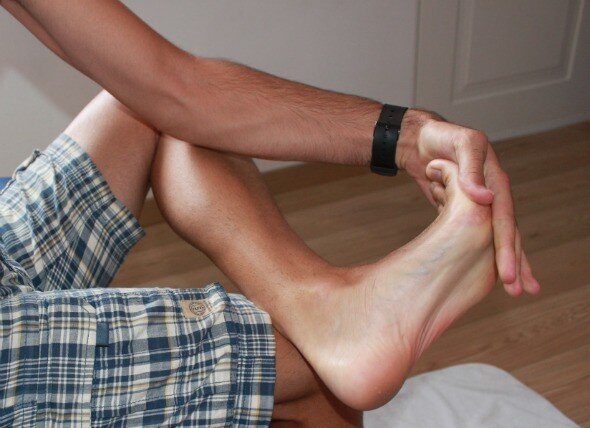
La choosing the right shoe it is essential. The shoe must be comfortable, with an appropriate size for the foot, since the feet may not be symmetrical. The athlete must try each new pair of shoes even if they are the same model that he usually uses.
How to treat plantar fasciitis?
El treatment of tigger points or trigger points It is based on physiotherapy with the performance of pressure massages on these nodes. The most widely used techniques that produce significant improvements are decontracting mesotherapy, cryotherapy, the dry needling technique, stretching prescribed by the physiotherapist and post-isometric relaxation.
In short, when there is pain in the sole of the foot and there has been no injury or any of the usual causes have been ruled out, it is necessary to guide the examination towards the detection of trigger points as a possible cause of the pain. plantar fasciitis
Once the diagnosis has been made, usually through a physical examination and the description of the symptoms reported by the patient, the sports doctor will decide which is the action protocol to be carried out. Only exceptionally is surgery used to treat this type of injury.
Although, there is no evidence of the effectiveness of a specific treatment for plantar fasciitis, there is a series of recommendations that in many cases can lead to its cure. Among them is the correction of training errors.
To heal quickly and without relapses, the injury must be identified as soon as possible and begin to avoid the painful gesture that causes it, since once it is established, it can take 8 to 18 months for the definitive healing.
Plantar Fasciitis Treatments
- In the acute phase of pain, use ice, and will apply Massage of about the zone of 10 or 20 seconds, 3 or 4 times a day. This prevents inflammation. Repeated use of ice or cryotherapy is the most effective treatment as cold limits pain, swelling, bruising and inflammation.
- The ultrasound continuous (5-10 W/cm) for about 5 minutes a day, they will be used in the post-acute phase of the injury, at 48 hours. The effects of ultrasound (pain reduction, increased blood flow, increased metabolism and reduced muscle spasm) help in the treatment of the injury, and give good results in athletes.
- Un deep massage, in small circular movements on the affected region, will reabsorb the edema and reduce muscle spasm.
- Combining ultrasound with electrical stimulation it can also be effective. Ultrasound acts on deep tissues and muscle stimulation increases the flexibility of the sole of the foot.
- The extracorporeal shock waves can help runners and athletes with plantar pain of more than a year of evolution, with chronic pain in the heel area. Some doctors recommend it, but its effectiveness is still under study.
- El tapping (bandage with adhesive tape strips) can help relieve pain. Such a bandage will limit the stress on the plantar fascia. It is also useful in case of a rupture of the aponeurosis.
- When acute pain is experienced, you can use templates shock absorption, discharge insoles, personalized insoles with previous biomechanical studies to correct the varus-valgus of the foot.
Tips for Coping with Plantar Fasciitis
If you suffer from plantar fasciitis, the first thing is to rest. It's never easy, especially if you have to walk a lot because of your work, but the ideal is to reduce the number of days of running, or even eliminate the series for swimming or cycling. It is also advisable to put a bottle of frozen water under the sole of the foot and roll it little by little for 8 or 10 minutes two or three times a day.

We must also pay attention to footwear (and not only the one we use for sports, but also the one we use in our daily lives), an aspect that we don't always give the importance it deserves and that can be behind sports injuries such as plantar fasciitis. Whether for running or for day-to-day use, wear shoes with good cushioning, which are comfortable and support the arch of the foot.
Be careful with flip flops or flip flops
Be careful with flat or worn shoes and sneakers; likewise, have be careful with the use of flip-flops or flip-flops because it is a type of footwear that can cause many problems if it is not used correctly.
In this article of partners They explain very clearly the risks of misusing flip flops or flip flops.
Don't forget the stretches, both of the foot muscles and the heel. You can actually do exercises to strengthen those muscles, for example picking up marbles with your foot and putting them into a cup or towel from the ground with your foot. Stretching with an elastic band and the calf are also interesting.
Finally, it is advisable to go to the specialist to prescribe painkillers such as ibuprofen or even the use of a splint while we sleep. Physiotherapy work is another treatment that will help you recover from plantar fasciitis; Your physio will give you good guidelines to follow to cure it and prevent future problems.
If medical treatment fails, surgery can be performed. Experts only recommend surgery if pain persists after three months of treatment. The foot is one of the key anatomical structures in the athlete. Any discomfort caused by the effort involved in high competition, which affects this area, affects the mechanics and can cause other injuries to the knees, hips, etc.
6 comments on "Plantar fasciitis: trigger points, symptoms and treatments"
Leave your comment
42K Best sellers in the last 15 days.
42K · All rights reserved

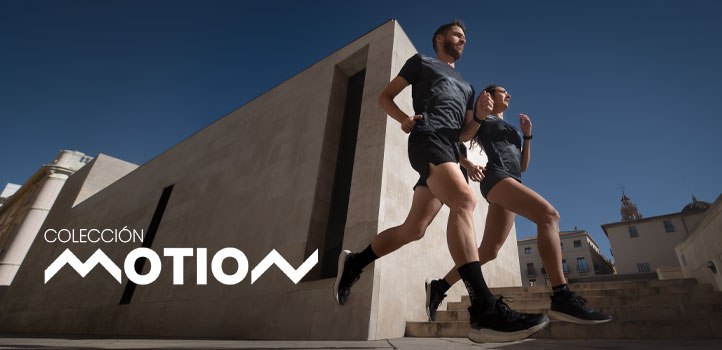

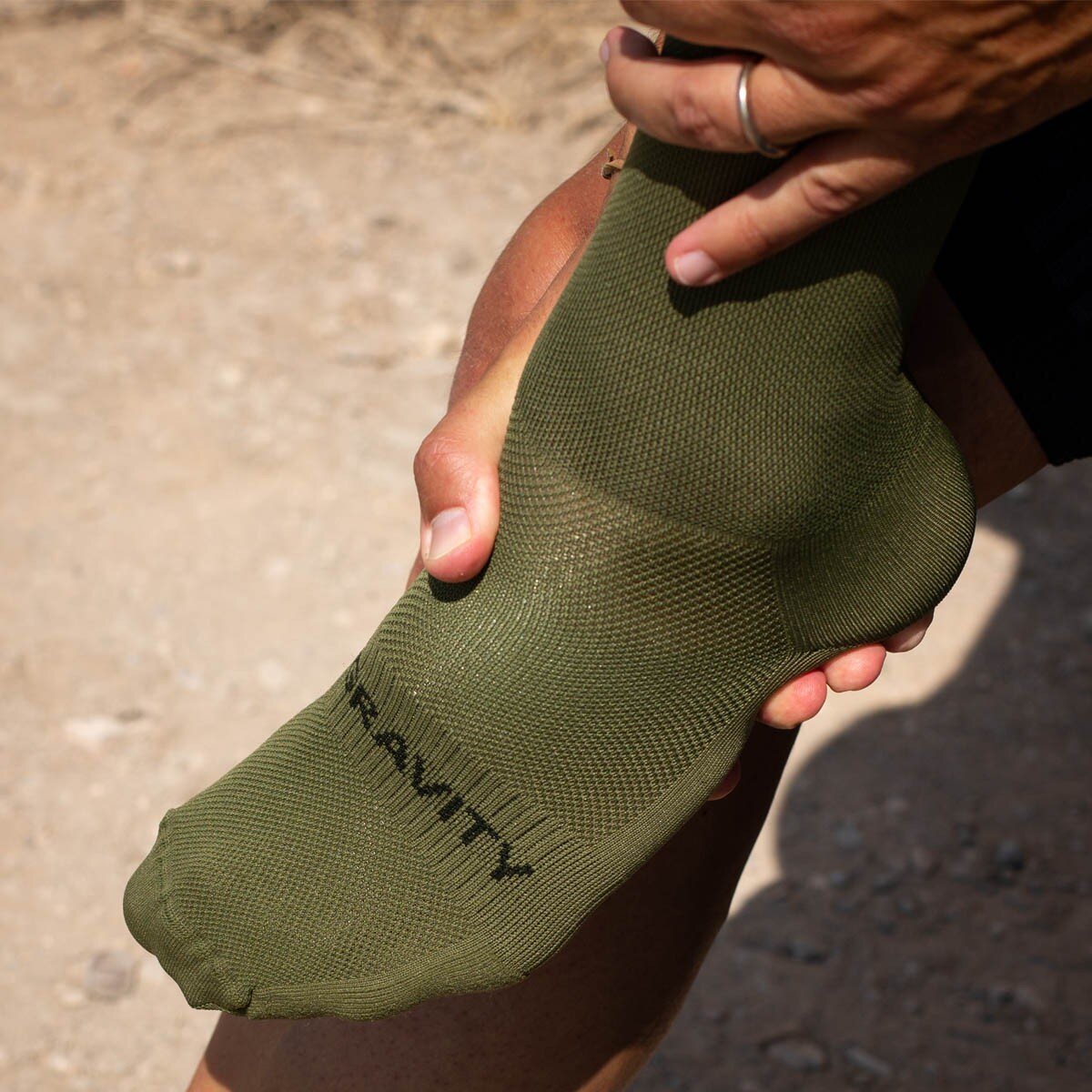
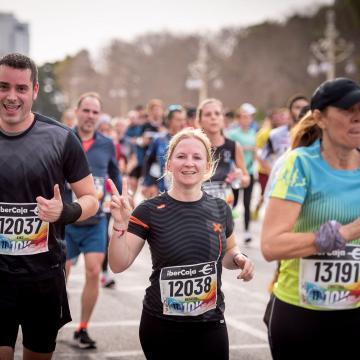
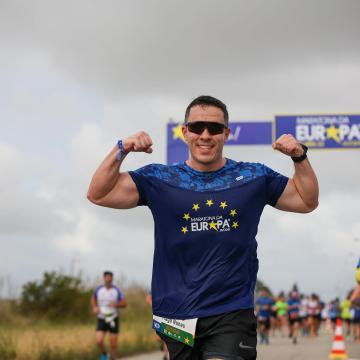
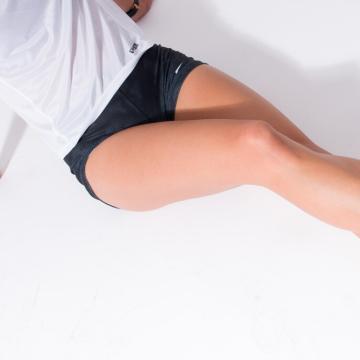
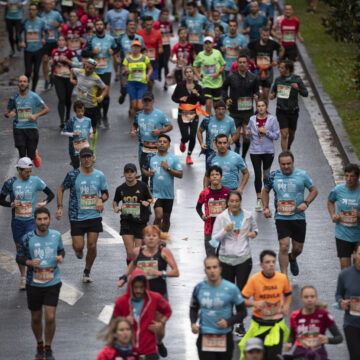



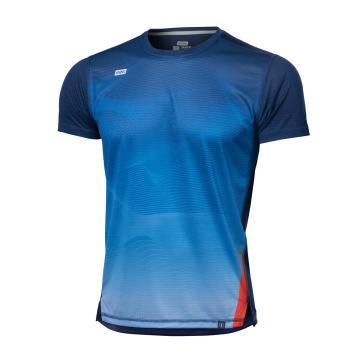
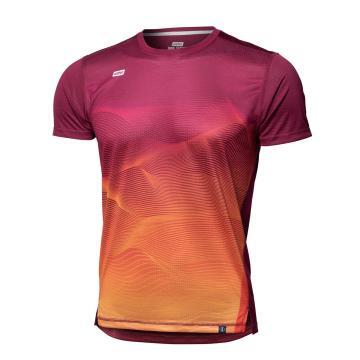
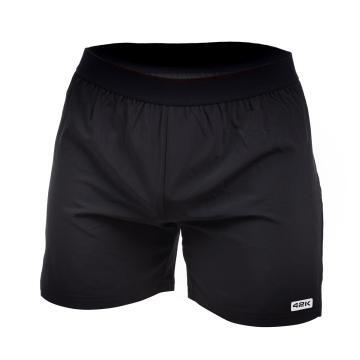
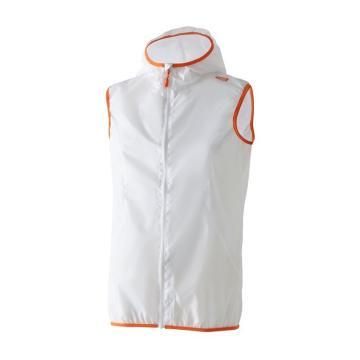
Hello, it is exactly what happens to me, every time I go running or just walking, what a pain, I notice the knots in my heel.
Thanks so much for the explanation.
Susana, visit your GP and confirm the diagnosis, we wish you a quick recovery and run again soon 🙂
As a great lover of foot care, I read a lot about all the conditions in them, and plantar fasciitis is a more serious problem than it may seem, especially because of the daily pain that it creates if it is not treated properly.
I have loved this article, and I think it is already the seventh that I read today.
Greetings and continue with this quality of content to inform people.
Thank you very much on behalf of the entire team at 42krunning.
I would add my case, after going to several doctors and they gave me the same diagnosis without being able to solve it, a podiatrist hit the key why it seems that it is a case that masks with fasciitis or spurs and is the loss of fat on the heel pad (in case it helps)
Thanks for the input Santi. Greetings from the entire team at 42K Running.